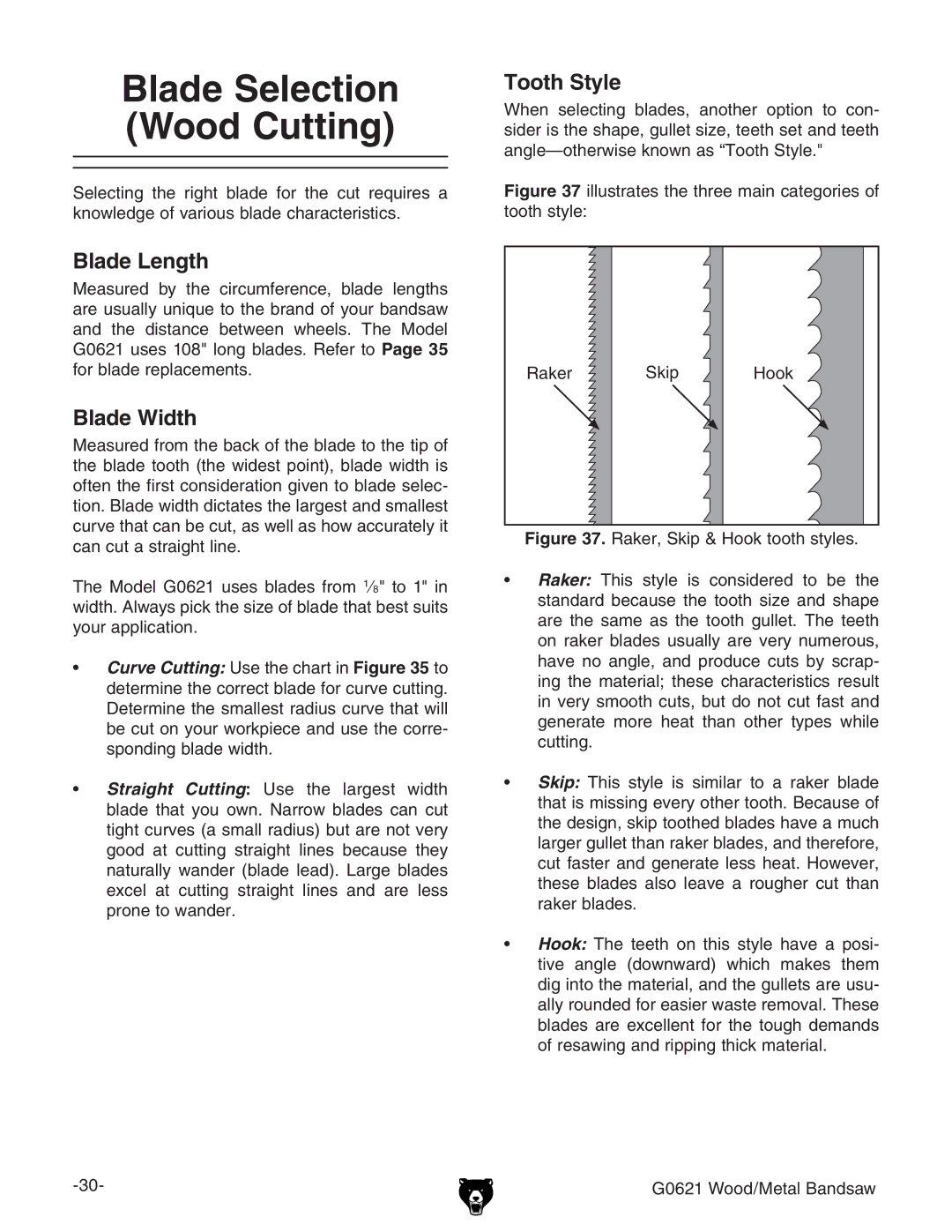
Blade Selection (Wood Cutting)
Selecting the right blade for the cut requires a knowledge of various blade characteristics.
Blade Length
Measured by the circumference, blade lengths are usually unique to the brand of your bandsaw and the distance between wheels. The Model G0621 uses 108" long blades. Refer to Page 35 for blade replacements.
Blade Width
Measured from the back of the blade to the tip of the blade tooth (the widest point), blade width is often the first consideration given to blade selec- tion. Blade width dictates the largest and smallest curve that can be cut, as well as how accurately it can cut a straight line.
The Model G0621 uses blades from 1⁄8" to 1" in width. Always pick the size of blade that best suits your application.
•Curve Cutting: Use the chart in Figure 35 to determine the correct blade for curve cutting. Determine the smallest radius curve that will be cut on your workpiece and use the corre- sponding blade width.
•Straight Cutting: Use the largest width blade that you own. Narrow blades can cut tight curves (a small radius) but are not very good at cutting straight lines because they naturally wander (blade lead). Large blades excel at cutting straight lines and are less prone to wander.
Tooth Style
When selecting blades, another option to con- sider is the shape, gullet size, teeth set and teeth
